Did you know that most of the world’s major cities developed along rivers? Whether it’s the Nile in Egypt or the Yangtze in China, ancient rivers have been the backbone of human civilization since the earliest millennia.
Rivers of the world have provided essential resources like fresh water, fertile soil, and transportation routes, enabling trade and communication between distant communities. These river civilizations were lifelines, linking people, supporting survival, and leaving lasting historical legacies.
That’s why we at Remitly have created this guide to share some of the world’s most influential rivers. You’ll see how rivers have been pathways to progress, influencing everything from food to religion, history to culture and the development of modern society. Let’s dive in.
The Nile: cradle of ancient Egypt
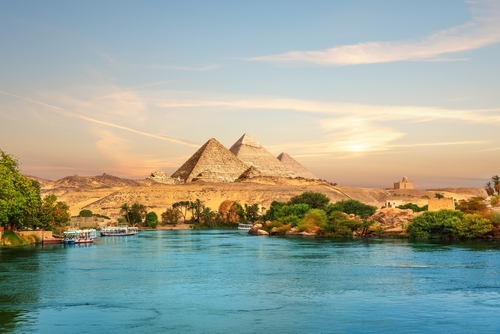
The Nile River in Africa was the lifeblood of ancient Egypt. Every year, predictable floods deposited nutrient-rich silt along the banks, transforming the harsh desert into fertile farmland that could feed large populations. This stability allowed villages to grow into cities like Thebes and Memphis. Eventually, it led to the unification of Upper and Lower Egypt under the rule of the pharaohs.
The Nile was also Egypt’s main highway. Boats carried grain, gold, papyrus, and other goods up and down the river, connecting Nubia in the south with Mediterranean civilizations to the north. The river’s steady rhythm gave Egypt a rare sense of security and longevity.
Additionally, its waters shaped culture and religion. Egyptians worshiped deities like Hapi, the god of the Nile, and even based their calendars on the river’s cycles. Daily life also revolved around it—fishing, irrigation, transport, and even leisure depended on its flow. The Nile made Egyptian civilization possible in one of the world’s harshest environments.
The Euphrates and Tigris: birthplace of civilization
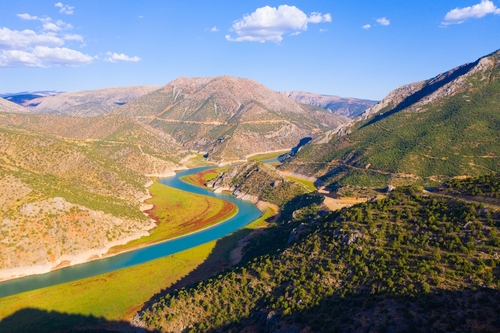
The Euphrates and Tigris are among the most important rivers in the world. Between them, Mesopotamia thrived as the cradle of civilization. Their fertile floodplains enabled people to move from nomadic life to farming, which gave rise to the world’s first cities, such as Uruk and Ur.
This region also produced groundbreaking achievements, including:
- Cuneiform, the world’s first writing system.
- The Code of Hammurabi—one of the earliest laws that brought order to society.
Irrigation was another key innovation here. Farmers built canals and dikes to control the rivers, leading to surplus crops that supported larger populations and more complex economies. Along these waterways, powerful empires like Babylon and Assyria rose, leaving behind monumental temples, vast libraries, and enduring cultural legacies.
The rivers also inspired ancient Mesopotamian beliefs. In myths like the Epic of Gilgamesh, the Euphrates and Tigris were seen as forces of both life and destruction, blessing the land with fertility but also threatening it with floods. Though these empires eventually declined, the two rivers remain potent symbols of human ingenuity, resilience, and culture.
The Yellow River: China’s ancient highway
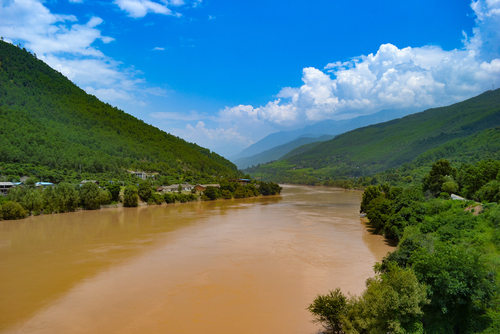
Farther east, another river became the heartbeat of Chinese civilization. For more than 4,000 years, the Yellow River—known as Huang He—offered nutrient-rich loess soil that made farming possible in North China. With this soil, farmers could grow millet and wheat to feed the growing population.
While rice became central to life in the Yangtze River basin, the Yellow River shaped the culture, economy, and politics of the north. This fertile base nurtured early dynasties such as the Shang (1600-1046 BCE) and Zhou (1046-256 BCE), establishing mighty kingdoms that laid the groundwork for East Asian history.
The Yellow River also served as a natural highway, useful during travel seasons. By linking distant regions, it made it easier to trade goods, exchange ideas, and spread cultural traditions across early Chinese states. This connectivity helped unify different communities into a cohesive civilization.
But the Yellow River was unpredictable. Frequent, devastating floods destroyed crops and cities, earning it the title “China’s Sorrow.” Despite these hardships, China’s second-longest waterway symbolized prosperity and human strength, becoming a hopeful symbol of China’s identity that endures today.
The Ganges: sacred waters and cultural identity
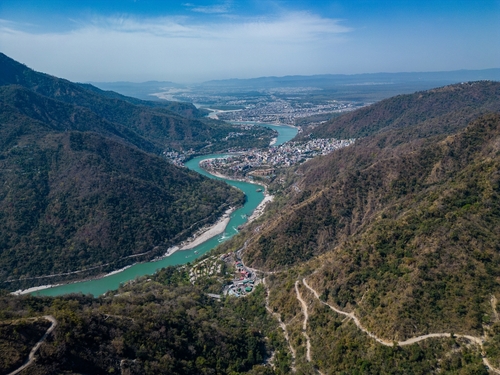
The Ganges is the spiritual heart of India. In Hindu tradition, its waters are considered purifying, and millions make pilgrimages each year to cities like Varanasi and Haridwar to bathe, pray, and scatter the ashes of loved ones. These rituals reflect the river’s role as a symbol of life, renewal, and divine connection.
Beyond its sacred importance, the Ganges has been the cornerstone for some of the world’s most densely populated areas, thanks to its fertile alluvial plains. Generations of farmers relied on its waters to grow rice, wheat, and sugarcane, creating the agricultural base for powerful kingdoms and thriving cities. Varanasi—one of the oldest continuously inhabited cities on earth—remains a hub of culture, learning, and religion, with the river flowing at its core.
Today, the Ganges embodies a dual identity: sacred in faith and essential for daily survival. Revering the river coexists with the practical need for water, food, and livelihoods, blending spiritual devotion with everyday dependence.
European rivers: commerce and connection
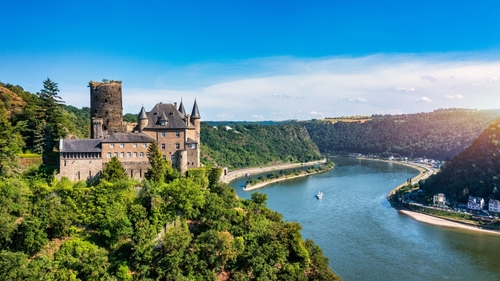
Europe’s great rivers—the Rhine, the Danube, and the Thames—have long been the route for commerce, linking inland regions with coasts and global markets.
- The Rhine connected Central Europe to the North Sea, making it one of the busiest trade routes in history. Its navigable waters carried goods like coal, timber, textiles, and wine, fueling industrial growth and linking German cities with the rest of the world.
- The Danube stretches across 10 countries, bridging Eastern and Western Europe. Along the banks, it helped shape the continent’s political and cultural identity. Cities like Budapest and Belgrade flourished as cultural and political centers because of their position on the Danube, making the river a true crossroads of Europe.
- Meanwhile, the Thames became London’s main artery, turning the city into a hub of global trade. Its tidal waters allowed ships from across the world to reach the heart of the city. Today, the river remains central to London’s economy, culture, and identity.
These waterways powered the industrial revolution across countries, fueling the transportation of coal, steel, and textiles. Factories and mills sprang up along their banks, and cities thrived with a constant flow of goods and ideas. Rotterdam, Vienna, and London all owe much of their growth to river commerce, which provided the infrastructure for flourishing urban communities.
Even today, these rivers remain vital to Europe’s transport and energy networks, blending centuries-old heritage with modern innovation. They show how waterways continue to drive economic power and cultural connection.
The Amazon and Congo: modern environmental lifelines
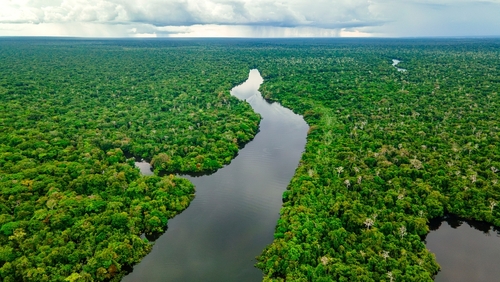
Some rivers remain vital even today. The Amazon is the world’s largest river by volume. It flows through the heart of South America and acts as a global climate regulator.
The rainforest absorbs large amounts of carbon dioxide, which helps stabilize the Earth’s atmosphere. Meanwhile, its waters nurture the richest biodiversity on the planet. From jaguars to pink dolphins, thousands of species depend on the Amazon basin for survival.
Across Central Africa, the Congo River system provides food, water, and transportation for about 75 million people. Its powerful currents fuel hydroelectric potential, while its forests and wetlands are home to species like bonobos and forest elephants. The river also sustains farming and fishing communities that have relied on its resources for generations.
But both ancient rivers face modern threats. Deforestation, mining, and climate change threaten ecosystems and local communities. Protecting the Amazon and Congo isn’t just about saving trees or wildlife; it’s about safeguarding the well-being and stability of societies worldwide.
Rivers in the modern world
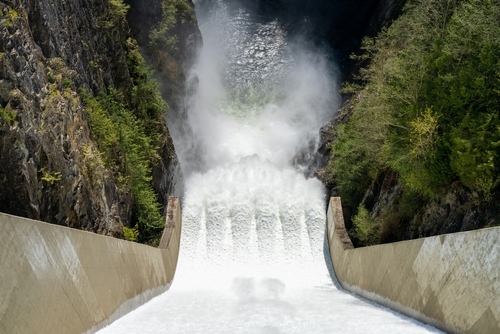
Today, rivers carry more than history—they fuel economies and remain at the core of today’s global economy and environment. From generating hydroelectric power to supporting shipping routes, rivers continue to shape how populations grow and connect. In contrast, countries without rivers face greater challenges in trade, transport, and energy access.
- Hydroelectric dams on rivers like the Yangtze, Congo, and Columbia power cities and industries, fueling modern development.
- At the same time, waterways such as the Mississippi, Rhine, and Mekong remain critical trade corridors, moving millions of tons of goods each year. These rivers serve as conduits for business and commerce, connecting rural producers to global markets.
Challenges and solutions
But with modern benefits come modern problems. Pollution from factories, disputes over water rights, and the unpredictable effects of climate change pose significant threats to both human communities and natural ecosystems. Rising temperatures alter river flows, while industrial waste and plastic pollution degrade water quality.
To address these challenges, countries and communities are investing in sustainable river management, with efforts such as:
- River clean-up initiatives to reduce plastic and industrial waste.
- International water treaties that promote fair sharing of resources across borders.
- Eco-friendly infrastructure, like fish-friendly dams and green shipping practices.
- Community-led conservation that empowers local people to protect and restore river ecosystems.
By balancing development with protection, rivers can continue to serve future generations.
Rivers as humanity’s eternal partners
From the Nile to the Amazon, rivers have always been a constant in humanity’s story, feeding civilizations, carrying trade, and shaping cultures across continents. Even today, they remain the silent backbone of our societies, sustaining billions of lives and countless ecosystems.
But these waterways are under pressure. Pollution, overuse, and climate change threaten the very rivers that carried us through history. Protecting rivers isn’t just about saving nature—it’s about securing our future.
Start by learning more about the rivers near you, supporting conservation projects, or even volunteering with organizations that safeguard these waters.
FAQs
Why did early civilizations develop along rivers?
Rivers provided water for drinking and farming, fertile soil for agriculture, and easy routes for transport and trade. These resources helped small villages grow into more complex civilizations.
Which river is considered the most important to human civilization?
Different regions had their own important rivers. The Nile in Egypt, the Tigris and Euphrates in Mesopotamia, the Yellow River in China, and the Ganges in India all shaped the civilizations around them.
How do rivers continue to impact modern society?
Today, rivers supply water, generate electricity, support farming, and anchor major cities. They remain vital for transport, trade, culture, and daily life.
What are the biggest threats to the world’s major rivers today?
Major threats include pollution, climate change, overuse of water, and the disruption of ecosystems by large dams. These challenges put both people and the natural environment at risk.